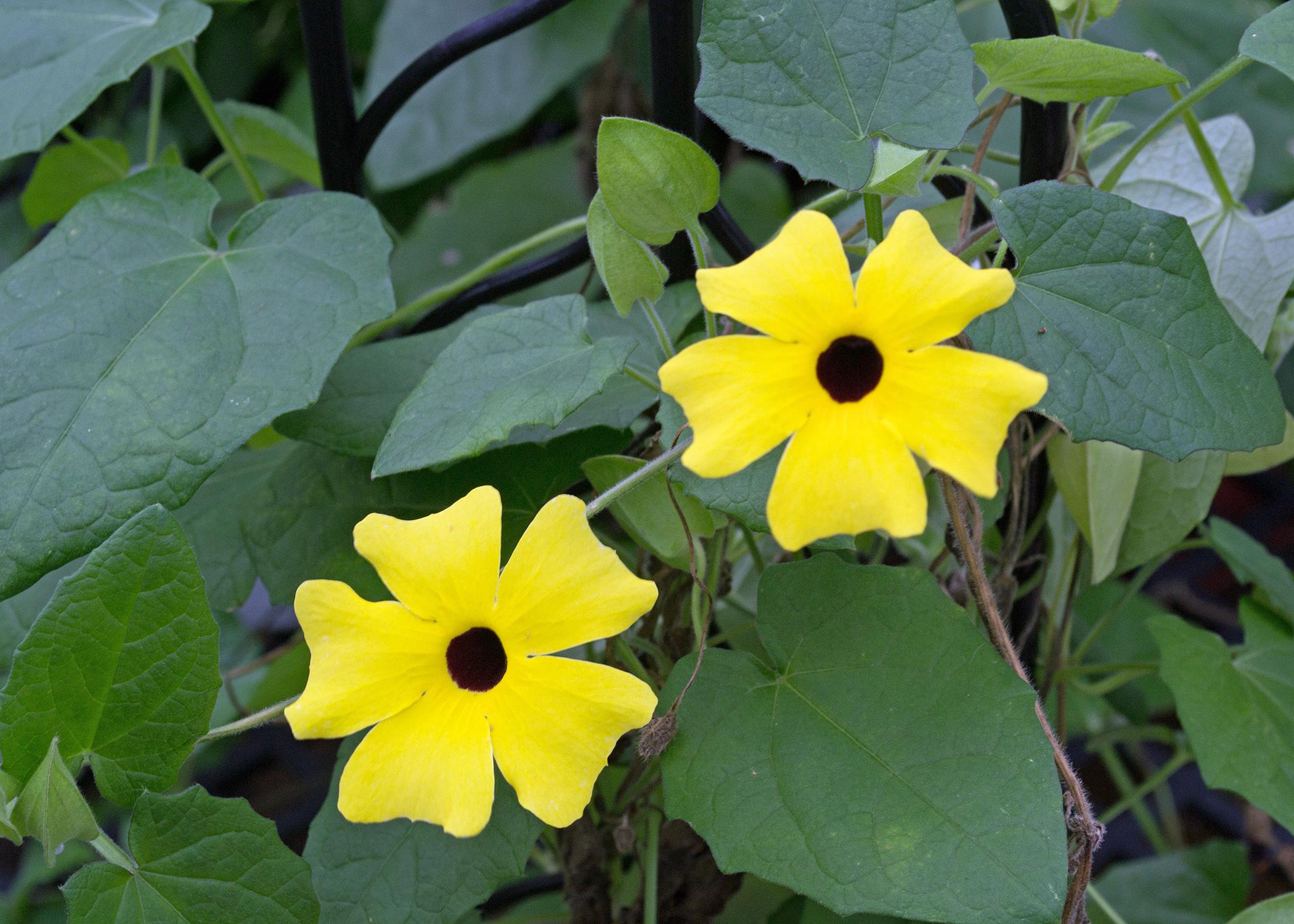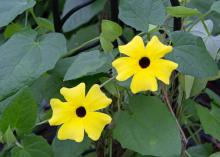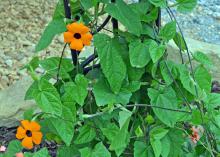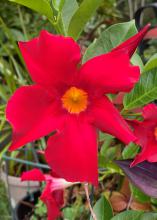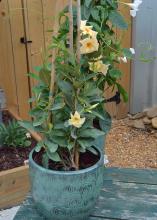Tropical vines can add big flowering displays
If you want to add a tropical feel to your deck, porch or patio, consider bringing in some tropical vines, such as mandevilla and black-eyed Susan vines.
These annual beauties create impressive flowering displays and look incredible in containers. I have several in containers around my back deck. You can also use them in containers to bring a splash of color and interest to any dull areas you may have in your landscape.
Hummingbirds, butterflies, bees and other pollinators love mandevillas and black-eyed Susan vines. It’s not just thanks to their bright, tropical colors and enticing smells. The flared, tube-shaped flowers are the perfect shape for hummingbirds’ long beaks and tongues.
I love the brightly colored red, pink, apricot and white, trumpet-shaped blooms of mandevillas that are displayed against a backdrop of dark-green, leathery foliage. My favorite colors are red and apricot, but with this variety, you’re sure to find one that compliments the look you are seeking.
Mandevillas can only tolerate temperatures as low as 45 to 50 degrees, so growing them in containers means you can move them indoors for the winter. If that sounds like too much work, you can plant them in the ground as an annual.
If you decide this fall to bring them indoors for the winter, first examine them carefully for pests. Look under the leaves, in the leaf axils where the leaf attaches to the vine, and in every conceivable nook and cranny for insects and other critters.
Black-eyed Susan vine is a tender evergreen that can be grown in a container and brought inside for the winter, or you can grow it in the landscape as an annual and replace it each year.
Known botanically as Thunbergia alata, this vine is not related to black-eyed Susan, which is Rudbeckia hirta. When comparing the two plants side by side, you will notice they are quite different despite the similar name. Common names are often confusing, which is why each plant is given one unique name, referred to as the scientific name.
Despite their differences, both of these plants have similar flowering traits, with a dark center surrounded by colorful yellow or orange petals.
New varieties of Black-eyed Susan vine are available with white, rose, red, lilac and pastel-colored flowers.
Lemon A-Peel and Orange A-Peel are two of my favorite varieties. Lemon A-Peel sports bright-yellow blooms with dark, dimpled eyes. Orange A-Peal is a fearless showstopper. It boasts bright-orange blooms with a black-purple eye and will climb anything willing to support it.
Mandevillas and black-eyed Susan vines can be used as stand-alone plants in a container or as companion plants in a combination planting. Using any of these tropical vines is sure to brighten up your deck, porch or patio all summer long.

